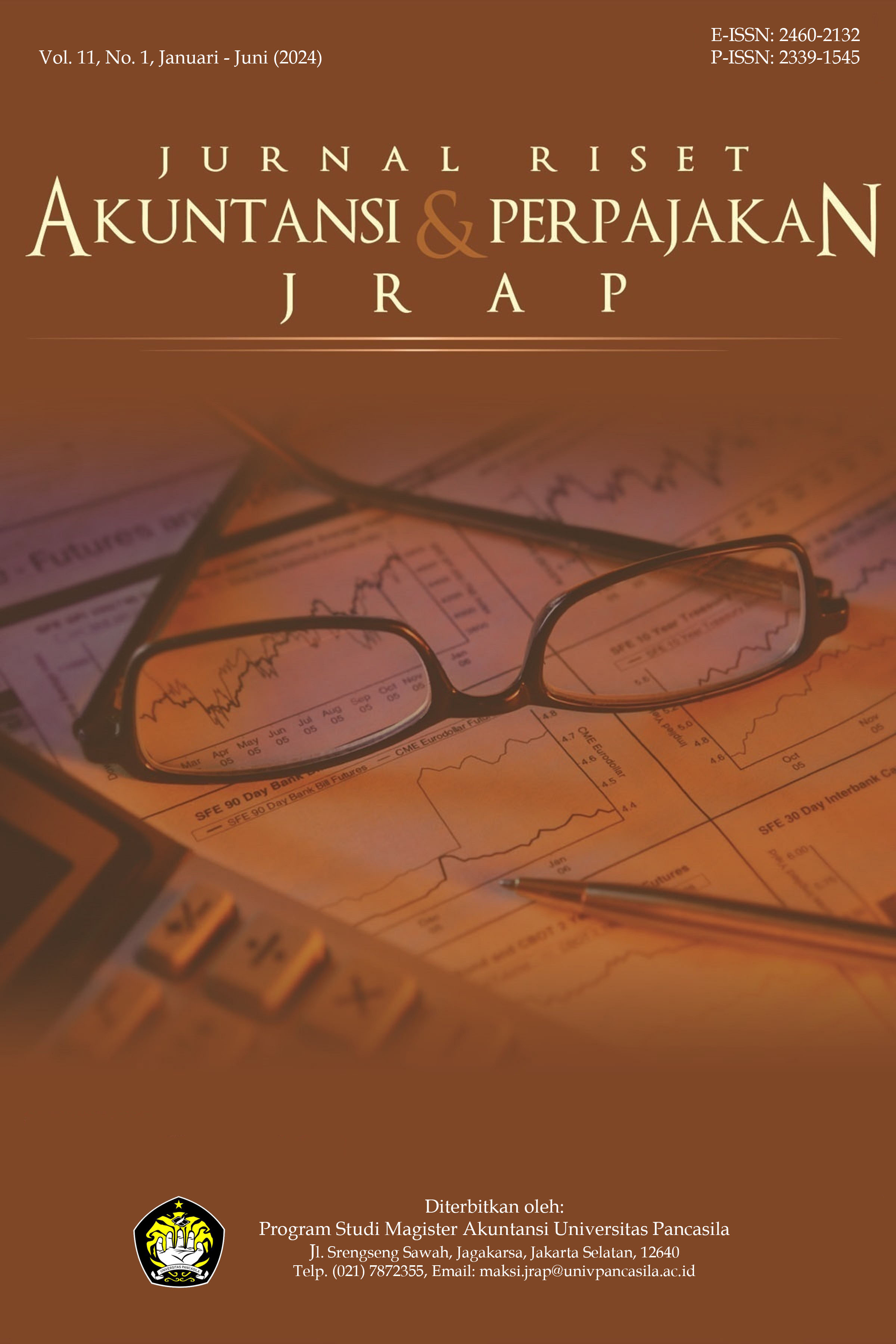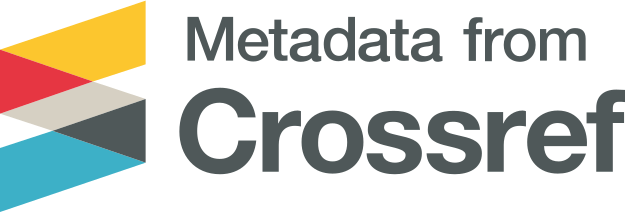Mampukah Model Enam Faktor Fama and French menggungguli Model Tiga Faktor Fama and French dengan Proksi Indeks Kompas 100
Abstract views: 815 | Download Pdf downloads: 515
Abstract
accompanying risks, many researchers have attempted to find financial asset valuation models. One of the most popular ones today is the Fama and French model. The initial model introduced was the Fama and French 3-factor model, which encountered various failures in some emerging market capital markets. In response, Fama and French improved their model, transforming it into a 6-factor model by adding aspects of profitability, investment, and momentum. This adjustment aimed to capture the relationship between the returns of securities or portfolios formed with systematic risk. However, the Fama and French 6-factor model did not perform well in some emerging market capital markets. The objective of this research is to test the accuracy of the Fama and French 6-factor model in the Indonesian Capital Market from 2017 to 2021. The research method employed is multiple linear regression, forming portfolios based on the framework established by the Fama and French 6-factor model. The research findings indicate evidence that the Fama and French 6-factor model can explain the returns of the formed portfolios. Market risk, book-to-market ratio, and investment aspect significantly impact the performance of the formed portfolio returns.
References
Acaravci, S. K., & Karaomer, Y. (2017). Fama-French Five Factor Model: Evidence from Turkey. International Journal of Economics and Financial Issues, 7(6), 130–137. https://www.econjournals.com/index.php/ijefi/article/view/5822
Amyulianthy, R., Astuti, T., Wahyudi, A., Harnovinsah, Sopanah, A., & Sulistyan, R. B. (2023). Diamond Fraud Determinants: An Implementation of Indonesia’s Wisdom Value. International Journal of Professional Business Review, 8(8), e02938. https://doi.org/10.26668/businessreview/2023.v8i8.2938
Banz, R. W. (1981). The Relationship Between Return and Market Value of Common Stocks. Journal of Financial Economic, 9(3), 3–18.
Barr Rosenberg, Kenneth Reid, R. L. (1985). Persuasive Evidence of Market Inefficiency. Journal of Portofolio Management, 9(5), 9–16.
Basu, S. (1983). The relationship between earnings’ yield, market value and return for NYSE common stocks. Further evidence. Journal of Financial Economics, 12(1), 129–156. https://doi.org/10.1016/0304-405X(83)90031-4
Candika, Y. I. (2017). Pengujian Kekuatan Model Carhart Empat Faktor terhadap Excess Return Saham di Indonesia. The International Journal of Applied Business, 1(1), 60–74.
Chiah, M., Chai, D., & Zhong, A. (2015). A Better Model? An Empirical Investigation of the Fama-French Five-Factor Model in Australia. SSRN Electronic Journal, 6(3), 1–33. https://doi.org/10.2139/ssrn.2557841
Fama, E. F., & French, K. R. (1992). The Cross‐Section of Expected Stock Returns. The Journal of Finance, 47(2), 427–465. https://doi.org/10.1111/j.1540-6261.1992.tb04398.x
Fama, E. F., & French, K. R. (1993). Common Risk Factors in stocks and bonds. Jurnal of Financial Economic, 21(4), 1–56. https://doi.org/10.1093/rof/rfx003
Fama, E. F., & French, K. R. (1996). Multifactor explanations of asset pricing anomalies. Journal of Finance, 51(1), 55–84. https://doi.org/10.1111/j.1540-6261.1996.tb05202.x
Fama, E. F., & French, K. R. (2015). A five-factor asset pricing model. Journal of Financial Economics, 116(1), 1–22. https://doi.org/10.1016/j.jfineco.2014.10.010
Fama, E. F., & French, K. R. (2018). Choosing factors. Journal of Financial Economics, 128(2), 234–252. https://doi.org/10.1016/j.jfineco.2018.02.012
Gregoriou, A., Healy, J. V., & Le, H. (2019). Prospect theory and stock returns: A seven factor pricing model. Journal of Business Research, 101(April), 315–322. https://doi.org/10.1016/j.jbusres.2019.04.038
Griffin, J. M., & Lemmon, M. L. (2002). Book-to-market equity, distress risk, and stock returns. Journal of Finance, 57(5), 2317–2336. https://doi.org/10.1111/1540-6261.00497
Jegadeesh, N., & Titman, S. (1993). Returns to Buying Winners and Selling Losers: Implications for Stock Market Efficiency. The Journal of Finance, 48(1), 65. https://doi.org/10.2307/2328882
Komara, E. F., & Yulianti, E. (2019). Analisis Perbandingan Capm Dengan Tfmff Dalam Mengestimasi Return Saham Pada Jii Periode 2014-2016. Jurnal MANAJERIAL, 18(1), 41–53. https://doi.org/10.17509/manajerial.v18i1.16297
Kubota, K., & Takehara, H. (2018). Does the Fama and French Five-Factor Model Work Well in Japan? International Review of Finance, 18(1), 137–146. https://doi.org/10.1111/irfi.12126
Liew, J., & Vassalou, M. (2005). Can Book-to-Market, Size, and Momentum Be Risk Factors That Predict Economic Growth? SSRN Electronic Journal, April, 1–46. https://doi.org/10.2139/ssrn.159293
Lintner, J. (1965). Separation theorems: The valuation of risk assets and the selection of risky investments in stock portfolios and capital budgets. Stochastic Optimization Models In Finance (2006 Edition), 47(1), 131–155. https://doi.org/10.1142/9789812773654_0010
Markowitz, H. (1952). Portfolio Selection. The Journal of Finance, 7(1), 77–91. https://doi.org/10.1111/j.1540-6261.1952.tb01525.x
Martins, C. C., & Jr., W. E. (2015). Pricing Assets with Fama and French 5--Factor Model: a Brazilian market novelty. Financial Management and Portofolio Analysys, 7(July), 23–25.
Mossin, J. (1966). Equilibrium in a Capital Asset Market. Econometrica, 34(4), 768. https://doi.org/10.2307/1910098
Munawaroh, U., & Sunarsih. (2017). Fama and French Six Factor Model: Evidence from Indonesia Sharia Stock Index (ISSI). Financial and Capital Market, 5(2), 149–200.
Nguyen, N. (2015). The Fama and French Five Factor Model: Evidance from Vietnam. Financial Accounting and Capital Market, 3(1), 1–27.
Novak, D. G. (2021). The Fama and French six-factor model-evidence for the German market. Master Thesis, 1(November), 52.
Ratna Dewi, N. P. D., & Suartana, I. W. (2018). Komparasi Capital Asset Pricing Model Dan Fama-French Three Factor Model Dalam Memprediksi Return Saham. E-Jurnal Ekonomi Dan Bisnis Universitas Udayana, 3, 747. https://doi.org/10.24843/eeb.2018.v07.i03.p05
Rjoub, H., Türsoy, T., & Günsel, N. (2009). The effects of macroeconomic factors on stock returns: Istanbul stock market. Studies in Economics and Finance, 26(1), 36–45. https://doi.org/10.1108/10867370910946315
Roll, R. (1981). A Possible Explanation of the Small Firm Effect. The Journal of Finance, 36(4), 879–888.
Ross, S. A. (1976). The arbitrage theory of capital asset pricing (Working Paper Version). Journal of Economic Theory, 13(3), 341–360. http://www.investmentanomalies.com/articles/031.pdf
Sharpe, W. F. (1964). of FINANCE. The Journal of Finance, 19(3), 425–442. https://doi.org/10.1111/j.1540-6261.1984.tb03646.x
Sudiyatno, B., & Irsyad, M. (2011). Study of The Three Factor Model Fama and French in Indonesia Stock Exchange. Jurnal Bisinis Dan Ekonomi (JEB), 18(2), 126–136. http://jp.feb.unsoed.ac.id/index.php/sca-1/article/viewFile/195/200
Sutrisno, B. (2016). Fama-French Di Indonesia. Jurnal Keuangan Dan Perbankan, 20(3), 343–357.
Yuki, D. D., & Siyami, V. (2022). Fama-French Five Factors Model pada Excess Return Indeks Kompas 100 Saham. Jurnal Riset Akuntansi Dan Perpajakan, 9(01), 88–100.
Zada, H., Rehman, M. U., Ghani, M., Zulfikar, S., & Bhutto, A. (2018). Application of Fama and French Five Factor Model of Asset Pricing: Evidence From Pakistan Stock Market. International Journal of Economics, Management and Accounting, 26(1), 1–23.
Copyright (c) 2024 Yuki Dwi Darma, Petiana Indriati, Pujiharta, Nani Hartati, Meika Indriani

This work is licensed under a Creative Commons Attribution-ShareAlike 4.0 International License.
Authors who publish with this journal agree to the following terms:
- Authors retain copyright and grant the journal right of first publication with the work simultaneously licensed under a Creative Commons Attribution-ShareAlike 4.0 International License that allows others to share the work with an acknowledgement of the works authorship and initial publication in this journal.
- Authors are able to enter into separate, additional contractual arrangements for the non-exclusive distribution of the journals published version of the work (e.g., post it to an institutional repository or publish it in a book), with an acknowledgement of its initial publication in this journal.
- Authors are permitted and encouraged to post their work online (e.g., in institutional repositories or on their website) prior to and during the submission process, as it can lead to productive exchanges, as well as earlier and greater citation of published work (See The Effect of Open Access).














